
Organic Chemistry,6th Edition L.G.Wade,Jr. Chapter 19 Aldehydes and Ketones
Chapter 19 Aldehydes and Ketones Organic Chemistry, 6th Edition L. G. Wade, Jr
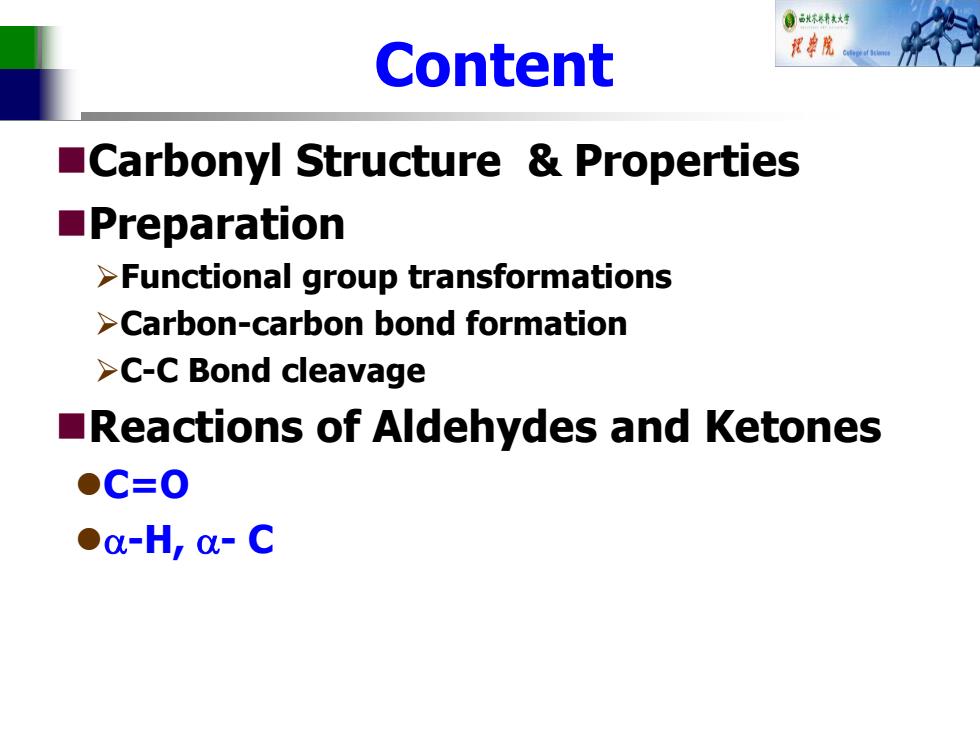
自成不精大好 Content 院 Carbonyl Structure Properties Preparation >Functional group transformations >Carbon-carbon bond formation >C-C Bond cleavage Reactions of Aldehydes and Ketones ●C=O ●o-H,-C
Content Carbonyl Structure & Properties Preparation Functional group transformations Carbon-carbon bond formation C-C Bond cleavage Reactions of Aldehydes and Ketones C=O -H, - C
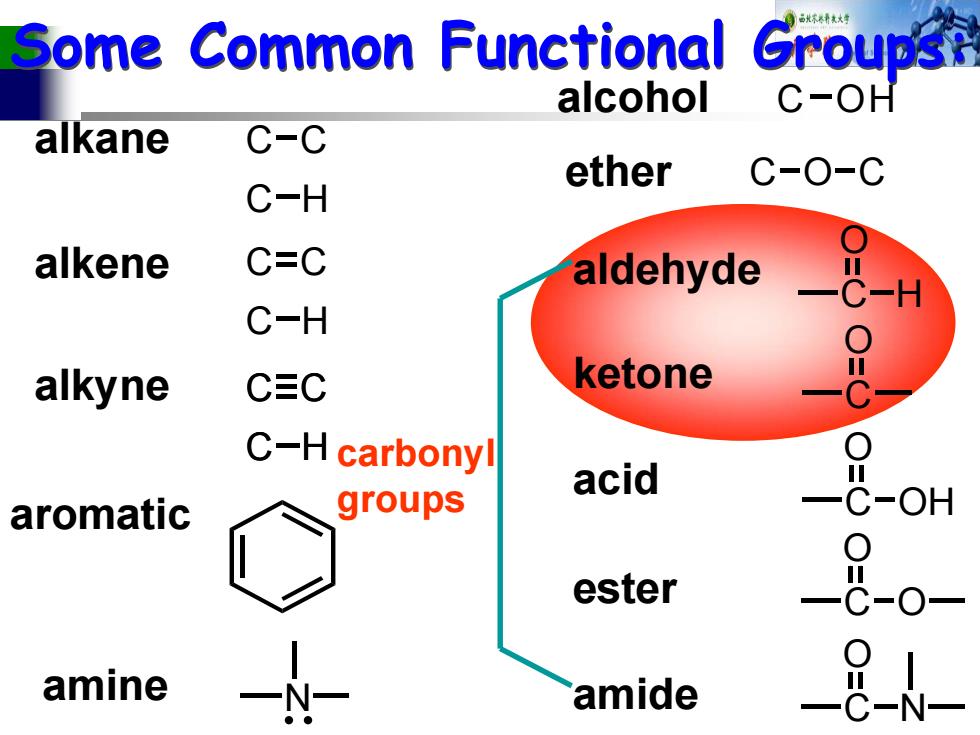
Some Common Functional Groups alcohol C-OH alkane C-C ether C-O-C C-H alkene C=C aldehyde C-H alkyne CEC ketone C-H carbonyl acid aromatic groups OH ester amine amide
Some Common Functional Groups: Some Common Functional Groups: C C C H alkane alkene C C C H alkyne C C C H aromatic alcohol C OH ether COC C O H aldehyde C O ketone C O OH acid C O ester O C O N amide N amine carbonyl groups
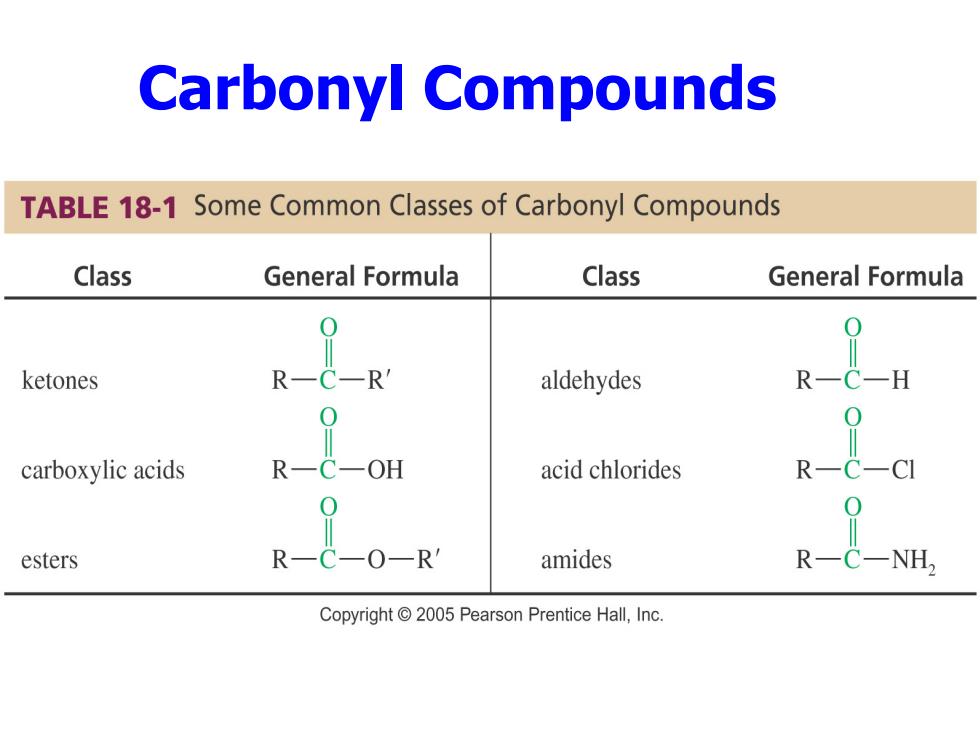
Carbonyl Compounds TABLE 18-1 Some Common Classes of Carbonyl Compounds Class General Formula Class General Formula ketones R R aldehydes R carboxylic acids OH acid chlorides esters -OR amides Copyright 2005 Pearson Prentice Hall,Inc
Carbonyl Compounds
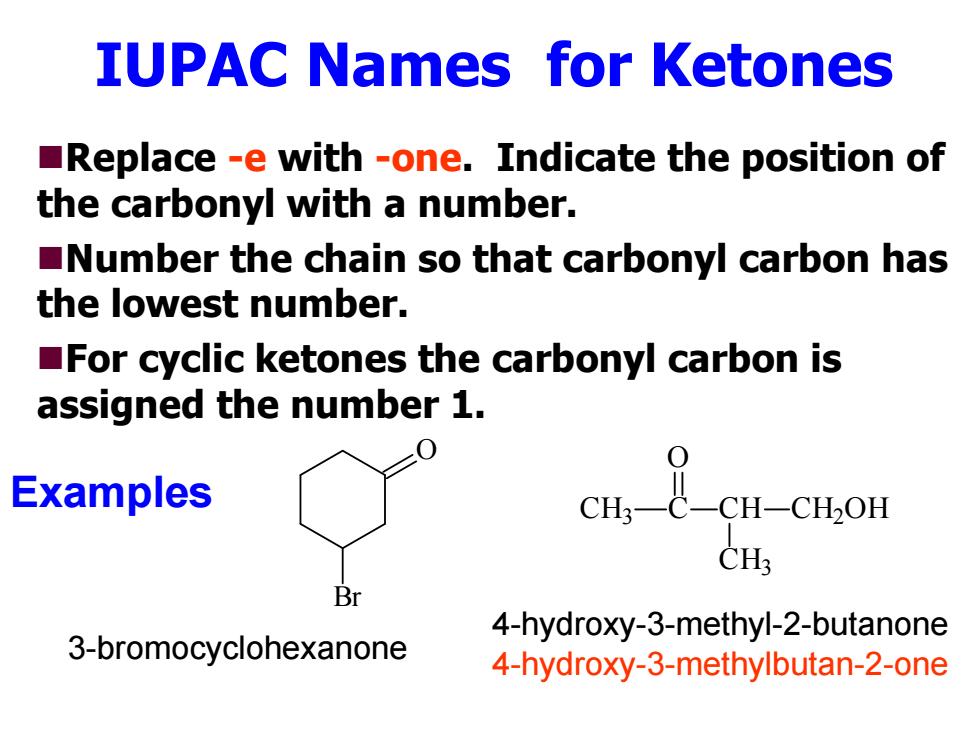
IUPAC Names for Ketones Replace -e with -one.Indicate the position of the carbonyl with a number. Number the chain so that carbonyl carbon has the lowest number. For cyclic ketones the carbonyl carbon is assigned the number 1. Examples CH: Br 4-hydroxy-3-methyl-2-butanone 3-bromocyclohexanone 4-hydroxy-3-methylbutan-2-one
IUPAC Names for Ketones Replace -e with -one. Indicate the position of the carbonyl with a number. Number the chain so that carbonyl carbon has the lowest number. For cyclic ketones the carbonyl carbon is assigned the number 1. O Br CH 3 C O CH CH 3 CH 2OH 3-bromocyclohexanone 4-hydroxy-3-methyl-2-butanone 4-hydroxy-3-methylbutan-2-one Examples
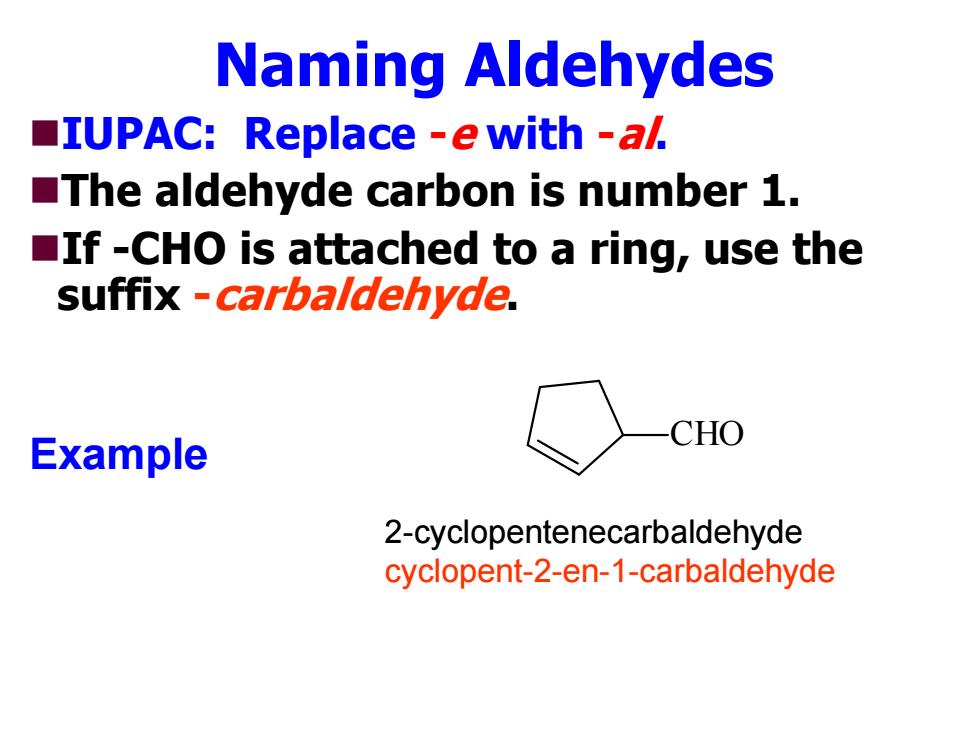
Naming Aldehydes IUPAC:Replace -e with -al The aldehyde carbon is number 1. If -CHO is attached to a ring,use the suffix -carbaldehyde. CHO Example 2-cyclopentenecarbaldehyde cyclopent-2-en-1-carbaldehyde
Naming Aldehydes IUPAC: Replace - e with -al. The aldehyde carbon is number 1. If -CHO is attached to a ring, use the suffix -carbaldehyde. Example CHO 2-cyclopentenecarbaldehyde cyclopent-2-en-1-carbaldehyde
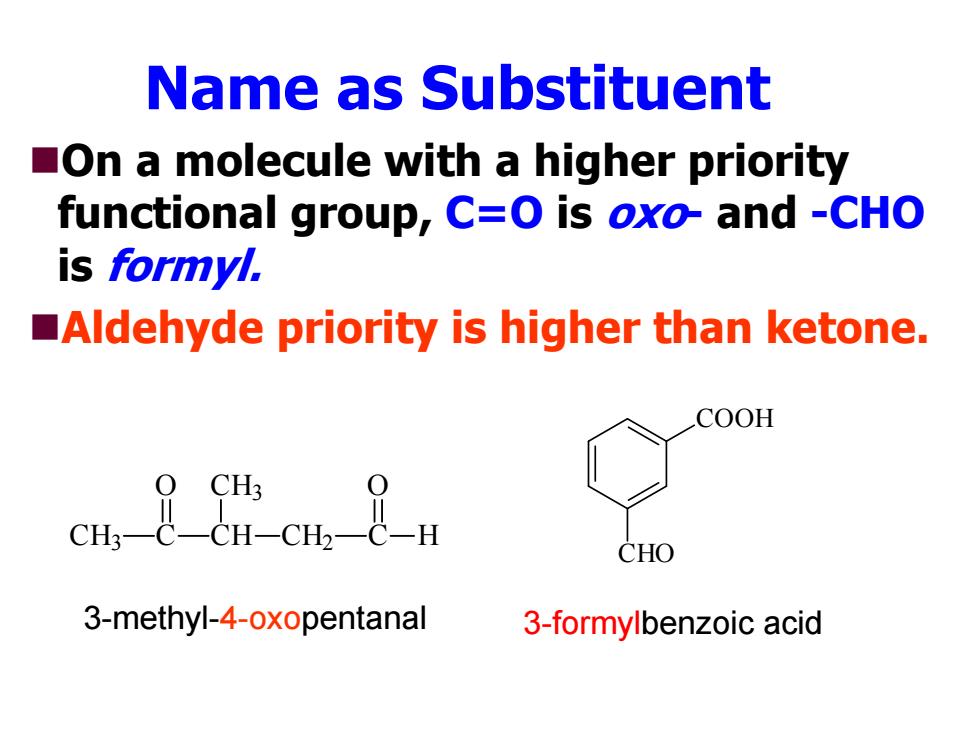
Name as Substituent On a molecule with a higher priority functional group,C=O is oxo-and -CHO is formyl. Aldehyde priority is higher than ketone. COOH CHO 3-methyl-4-oxopentanal 3-formylbenzoic acid
Name as Substituent On a molecule with a higher priority functional group, C=O is oxo- and -CHO is formyl. Aldehyde priority is higher than ketone. CH 3 C CH CH 3 CH 2 C H O O COOH CHO 3-methyl-4-oxopentanal 3-formylbenzoic acid
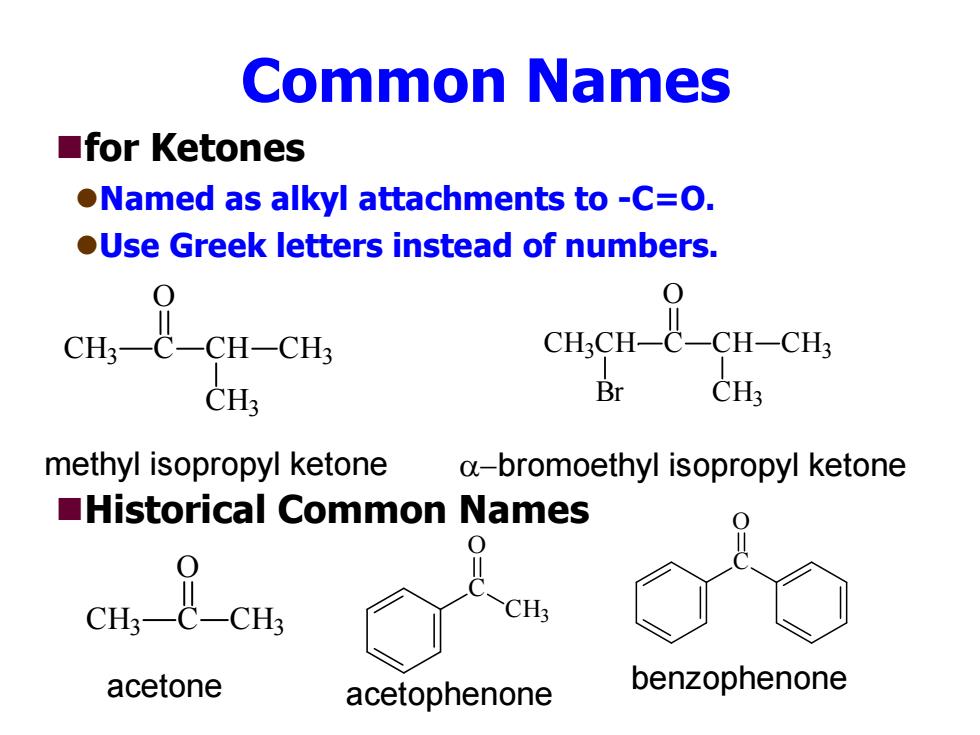
Common Names ■for Ketones Named as alkyl attachments to -C=O. OUse Greek letters instead of numbers. 0 0 CH3一C一CH-CH3 CH;CH-C-CH-CH3 CH3 Br CH: methyl isopropyl ketone a-bromoethyl isopropyl ketone Historical Common Names CH; acetone acetophenone benzophenone
Common Names for Ketones Named as alkyl attachments to -C=O. Use Greek letters instead of numbers. Historical Common Names CH 3 C O CH CH 3 CH 3 CH 3CH C O CH CH 3 CH 3 Br methyl isopropyl ketone bromoethyl isopropyl ketone CH 3 C O CH 3 C CH 3 O C O acetone acetophenone benzophenone
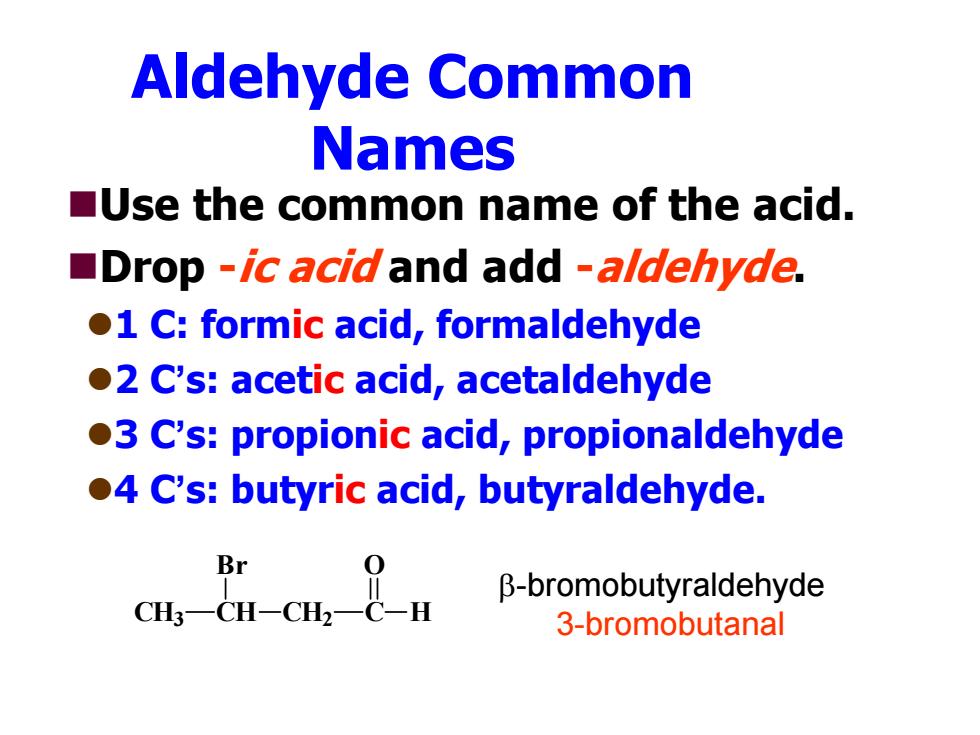
Aldehyde Common Names Use the common name of the acid. Drop -ic acid and add -aldehyde. 1 C:formic acid,formaldehyde 2 C's:acetic acid,acetaldehyde 3 C's:propionic acid,propionaldehyde 4 C's:butyric acid,butyraldehyde. Br B-bromobutyraldehyde 3-bromobutanal
Aldehyde Common Names Use the common name of the acid. Drop -ic acid and add -aldehyde. 1 C: formic acid, formaldehyde 2 C’s: acetic acid, acetaldehyde 3 C’s: propionic acid, propionaldehyde 4 C’s: butyric acid, butyraldehyde. CH 3 CH Br CH 2 C H O -bromobutyraldehyde 3-bromobutanal
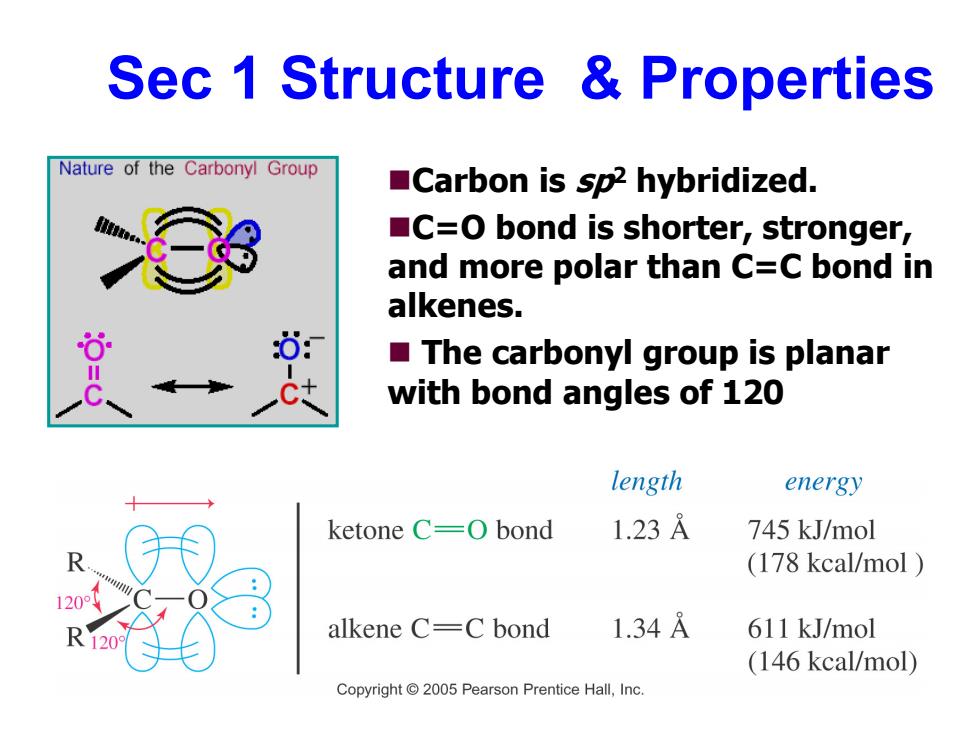
Sec 1 Structure Properties Nature of the Carbonyl Group Carbon is sp2 hybridized. C=O bond is shorter,stronger, and more polar than C=C bond in alkenes. The carbonyl group is planar with bond angles of 120 length energy ketone C=0 bond 1.23A 745 kJ/mol (178 kcal/mol alkene C=C bond 1.34A 611 kJ/mol (146 kcal/mol) Copyright 2005 Pearson Prentice Hall,Inc
Sec 1 Structure & Properties Carbon is sp2 hybridized. C=O bond is shorter, stronger, and more polar than C=C bond in alkenes. The carbonyl group is planar with bond angles of 120